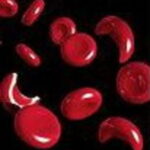Pernicious anemia (also known as Biermier’s anemia , Addison anemia , or Addison-Biermer anemia ) is one of the many types of megaloblastic anemia1 and is caused by the loss of gastric parietal cells and the subsequent inability to absorb vitamin B 12 .
Usually seated in an atrophic gastritis, the autoimmune destruction of gastric parietal cells leads to a lack of intrinsic factor2 . Because the absorption from the gut of normal dietary amounts of vitamin B 12 is dependent on the amount of intrinsic factor, the result is a B 12 deficiency. It should be noted that the term ‘pernicious anemia” is sometimes used incorrectly to describe megaloblastic anemia resulting from any B 12 deficiency, however, true pernicious anemia is caused strictly by atrophic gastritis, loss of parietal cells, and lack of intrinsic factor only.
The loss of ability to absorb vitamin B 12 is the most common cause of deficiency in adults. Such loss can be due to pernicious anemia (with the resulting loss of intrinsic factor) or a number of other conditions which decrease the production of gastric acid, which also plays a part in absorption of vitamin B 12 from foods.
Historically, pernicious anemia (PA) was generally detected only after it became “clinical” (caused an overt disease state) and the anemia was well established (i.e., liver stores of B 12 have been depleted.) The “pernicious” (meaning it causes great harm or even death) aspects of the disease were peripheral nerve damage and – prior to discovery of a treatment – a prognosis as poor as leukemia before it could be treated. Now, since medical science has determined what causes pernicious anemia, tests have been developed that specifically target the absorption of vitamin B 12 and the condition can be diagnosed before it ever becomes clinically apparent – often without the patient ever becoming ill.
I t should be noted that replacement of vitamin B 12 does not correct the defect in absorption caused by the loss of intrinsic factor – the condition that actually defines the disease. A person suffering from pernicious anemia will have it the remainder of their life, however, unless permanent peripheral nerve damage has occurred, regular B 12 replacement will keep the condition in check with no additional damage.
What is the pathophysiology of Pernicious Anemia?
V itamin B 12 cannot be produced by the human body and, therefore, must be obtained from the diet. Under normal conditions, the B 12 is absorbed by the body in the small bowel after being bound by Intrinsic Factor (IF) produced by the parietal cells of the gastric mucosa. It is believed that Pernicious Anemia occurs when the body’s immune system mistakenly targets the Intrinsic Factor with the resulting loss of parietal cells (pictured at right). The end result of insufficient IF levels is insufficient absorption of B 12 (also known as cobalamin ). Under normal circumstances the body stores between three (3) to five (5) years’ worth of B 12 in the liver, however, the usually undetected autoimmune activity over a prolonged period of time can lead to depletion of this reserve and the resulting anemia. A secondary consequence is the inhibition of DNA synthesis in the red blood cells which leads to the formation of large, fragile megaloblastic erythrocytes.
What are the signs and symptoms of Pernicious Anemia?
Pernicious anemia presents insidiously (meaning the effects are both gradual and cumulative in nature) and the symptoms are usually due to the anemia itself where it is present. While it may consist of the triad of symptoms – paraesthesias3 , sore tongue, and weakness – these are not the chief symptoms. A person with Pernicious Anemia might also complain of fatigue, depression, forgetfulness, difficulty concentrating, low-grade fever, nausea, and gastrointestinal symptoms such as heartburn. Because it can affect the spinal cord, a person with PA might also complain of impaired urination, loss of sensation in their feet, unsteady gait, weakness or being clumsy.
Numerous other signs and symptoms are attributed to PA. These include: shortness of breath (known as ‘the sighs’), difficulty in proprioception4 , neuropathic pain, frequent diarrhea, jaundice (due to impaired formation of blood cells), and glossitis (swollen, red tongue) due to B 12 deficiency. Persons with PA may also present with hyperthyroidism (over-active thyroid) or hypothyroidism (under-active thyroid). In severe cases of chronic PA, the person may experience distal sensory lost (posterior column), absent ankle reflex, increased knee reflex response and exterior plantar response. These symptoms are the result of sub-acute combined degeneration of the spinal cord.
What causes Pernicious Anemia?
In temperate climates, the most common cause for impaired binding of vitamin B 12 is autoimmune atrophic gastritis5 where auto-antibodies are directed against parietal cells (resulting in their loss), as well as the intrinsic factor itself which renders it unable to bind the B 12 . Although occurring less frequently, loss of parietal cells may simply be the result of wide-spread atrophic gastritis of a non-auto-immune origin such as is frequently see in elderly people with long-standing chronic gastritis of any cause – including Helicobacter pylori ( H-pylori ) infection.
Forms of vitamin B 12 deficiency – other than pernicious anemia – must be considered in making a differential diagnosis of megaloblastic anemia. For example, a B 12 deficient state which causes megaloblastic anemia and which might be mistaken for classic pernicious anemia, can also be caused by infection with the tapeworm Diphyllobothrium latum. It’s believed this might be a result of the parasite’s competition for the vitamin B 12 .
Lastly, a similar disorder involving impaired B 12 absorption can also occur following gastric removal (gastrectomy) or gastric bypass surgery – particularly the Roux-en-Y bypass. This procedure separates the stomach into two section, one a very small pouch for holding small amounts of food and the other – the remainder of the stomach – which is insultingly non-functional, The end result is the mucosal cells are no longer available nor is the required intrinsic factor. The result is inadequate GI absorption of B 12 which can cause a syndrome indistinguishable from pernicious anemia.
How is PA diagnosed?
D ue to the insidious nature of the disease, combined with the fact that there is no single definitive test for pernicious anemia, can mean a delay in diagnosing the condition. It (pernicious anemia) is suspected when a patient’s blood smear shows large, fragile, immature erythrocytes (megaloblast). The Schilling test – once commonly used to diagnose PA – is no longer widely available and other main diagnostic signpost of low levels of serum B 12 can’t be relied upon as these tests can show high levels of serum B 12 and still have pernicious anemia. Likewise, blood and urine testing (for the presence of Methylmalonic acid6 ) might indicate a a deficiency even though serum B 12 is within the acceptable range. The presence of serum B 12 is not necessarily an indicator of efficient use by the body.
A diagnosis of pernicious anemia first requires demonstration of megaloblastic anemia (by means of a full blood count) which evaluates the mean corpuscular volume (MCV), as well as the mean corpuscular hemoglobin concentration (MCHC). Normally, with pernicious anemia, the MCV is high while the MCHC is normal. In addition, ovalocytes are seen on a patient’s blood smear.
A diagnosis of atrophic gastritis Type A should be confirmed using gastroscopy as well as stepwise biopsy. It is estimated that approximately 90% of individuals with PA have antibodies for parietal cells; however, only 50% of all individuals in the general population with these antibodies have pernicious anemia.
How is Pernicious Anemia treated?
The treatment of PA varies from country to country as well as from area to area. There is not a permanent cure for pernicious anemia, however, replenishing B 12 can be expected to result in a cessation of anemia related symptoms. In addition, replenishment therapy can halt neurological deterioration, and – in cases where neurological problems are not advanced – neurological recovery and a complete and permanent remission of all symptoms as long as the supplement is continued. The repletion of B 12 can be accomplished in a variety of ways. By far the most accessible and less expensive method is through a dietary supplementation in the form of oral or sublingual B 12 tablets. These supplements are widely available in supermarkets, health food stores, and drug stores although quality and cost may vary.
It should be noted, however, that in some cases oral and sublingual repletion is inadequate and the patient must receive the supplement in the form of an injection. These are usually given once-a-month and bypass the need for gastrointestinal absorption altogether. These injections will typically need to be given for the remainder of the patient’s life.
1 Megaloblastic anemia is an anemia (of macrocytic classification) that results from the inhibition of DNA synthesis in red blood cell production.
Source: Wikipedia.com ( http://en.wikipedia.org/wiki/Megaloblastic_anemia )
2Intrinsic Factor (IF ) is a glyco protein produced by parietal cells of the stomach. It is necessary for the absorption of vitamin B 12 in the terminal ileum.
Source: Wikipedia.com ( http://en.wikipedia.org/wiki/Intrinsic_factor )
3Paraesthesias is a sensation tingling, pricking, or numbness of the skin with no apparent long-term physical effect. It can be either transient or chronic in nature.
Source: Wikipedia.com ( http://en.wikipedia.org/wiki/Paresthesia )
4 Proprioception is the sense of (the) relative position of neighboring parts of the body. It indicates if the body is moving with the required effort as well as where the various parts of the body are in relation to each other.
Source: Wikipedia.com ( http://en.wikipedia.org/wiki/Proprioception )
5Atrophic Gastritis is a process of chronic inflammation of the stomach mucosa , leading to a loss of gastric glandular cells and eventual replacement by intestinal and fibrous tissue.
Source: Wikipedia.com ( http://en.wikipedia.org/wiki/Atrophic_gastritis )
6Methylmalonic acid is a dicarboxylic acid that is a C – methylated derivative of malonate.


